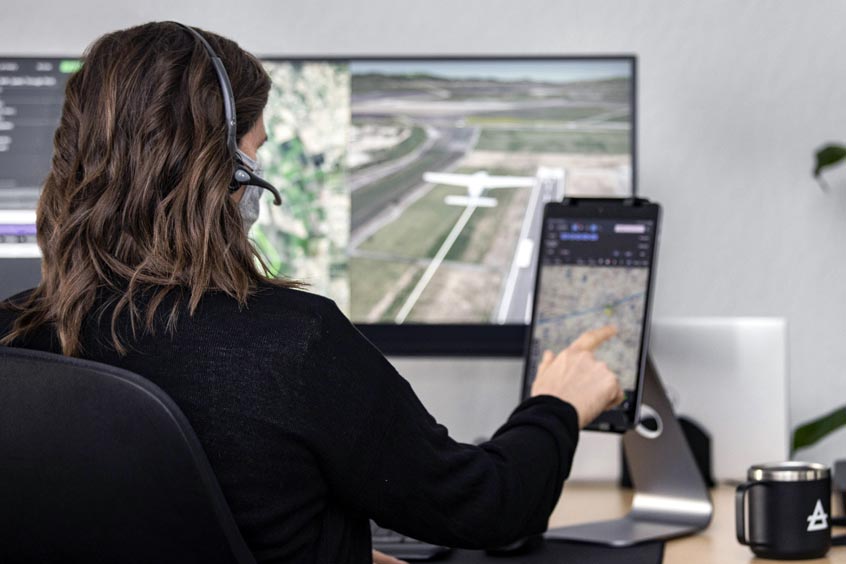Why visit ACE ’25?



In February, Reliable Robotics completed a series of remotely operated test flights directed by a pilot stationed in its Mountain View, California headquarters over 50 miles away. The remote pilot in the control centre instructed an upgraded Cessna 208 Caravan to taxi, takeoff, manoeuvre over a populated region and land while communicating with nearby air traffic through the aircraft's onboard radios. The company aims to be the first to bring automated air transportation to the cargo market. The flights mark a significant advancement for remotely piloted commercial aircraft in the US.
“Automating a large aircraft with remote piloting infrastructure is an impressive technical achievement for commercial aviation, coming years before many in the industry expected,” says Charles Graham, former CEO for aviation, DHL Express. “Operating from a control centre increases safety margins, reduces workload and enables pilots to focus on communications and complex decision making.”
Reliable Robotics debuted its advanced autoflight system on a Cessna 172 in 2019. This recent exhibition underscores the flexibility in its approach to autonomy by fully integrating the same system with the larger Cessna Caravan. The test flights serve to advance the company's main objective of certifying its system for use on any aircraft.
Early test flights are conducted by a remote pilot seated in the new control centre, while an onboard safety pilot concurrently monitors flight performance. Data and experience gathered during each flight informs future engineering decisions, supports operational design within the workspace and helps test and improve onboard control systems. With regulatory oversight and experimental approval to fly remotely piloted aircraft, the company plans incremental certification with gradually increasing autonomy.
Signalling the importance of trained pilots in its automation solution as well as the security implications associated with remotely operated aircraft, leadership from the SpaceX Falcon 9 and Dragon 2 programmes joined the team to develop the system's human interface and cybersecurity framework. By leveraging existing training programmes, pilots with established credentials and experience can transition into remote operation roles using knowledge and skills they already have.
Unlike today's commercial autopilots, Reliable Robotics envisioned and built a system capable of remote operation from a control centre staffed with professional pilot. The system includes ‘pilots-in-the-loop’, whereby control centre workstations enable remote command of aircraft during all phases of flight. Remote pilots maintain situation awareness and manage the flight plan similarly to an onboard pilot. A proprietary sensing and computing platform handles fault management in conjunction with added mechanical redundancy designed for continuous safe operation. Detailed insight into each aircraft's condition is made available to operators through a secure network.
The modified aircraft operates in a manner indistinguishable from others sharing the airspace, with no changes to existing infrastructure or procedures. Remote pilots verbally communicate with ground and air traffic controllers as well as other aircraft.
Command and control, voice and data links implement end-to-end encryption with authenticity and integrity checking methods developed for safety and mission critical applications. This ensures all data relayed between the remote pilot and the aircraft can be cryptographically verified as original and unaltered.
“Routine flight testing from our control centre is essential for validating our design and developing human factors guidelines for commercial remote piloting,” says Casey Klebba, director of remote piloting at Reliable Robotics. “Equally important is our work to support and advance the certification basis for autonomous aircraft systems so they can be operated at scale.”
In recent years, the aviation industry has moved to the forefront of commercial autonomous vehicle development. Governed by strict regulations, the anticipated integration of remotely piloted planes promises greater efficiencies related to time, cost and access. Once certified for commercial use, advanced aircraft automation will allow operators to meet rising cargo demands and eventually offer more convenient flight options for passengers.
By expanding the use of small regional airports in underserved markets, major carriers will be able to open new routes and improve delivery speeds. Without reliance on local crew availability, flight turnarounds will be faster. Pilots will no longer be limited to flying specific types of aircraft, the same routes or only one to two flights a day. Geographically distributed control centres will enable constant operation across time zones, giving remote operators the ability to fly more frequently than traditional airlines.
“The demonstration from our control centre highlights how our system incorporates the best of both advanced automation and people to improve aircraft operations,” adds Robert Rose, co-founder and CEO of Reliable Robotics. “When this technology becomes commonplace, we're going to see a far safer and more productive National Airspace System for all participants.”
To bring remotely piloted aircraft to the market as soon as possible, Reliable Robotics plans to more than double in size over the next year. The company has already assembled a team of industry experts and continues to search for top engineering talent by embracing remote hiring and distributed collaboration. Its accomplishments were recently selected as a finalist for the 2020 Collier Trophy award for the greatest achievements in aeronautics or astronautics in the United States. Ambitious experimental and certification flight tests in 2021 include flying between airports and remote operation across state lines.